Role of incentives in Denuclearization: A Comparative Analysis of Iran and North Korea
Swaira Irfan November 4, 2025 1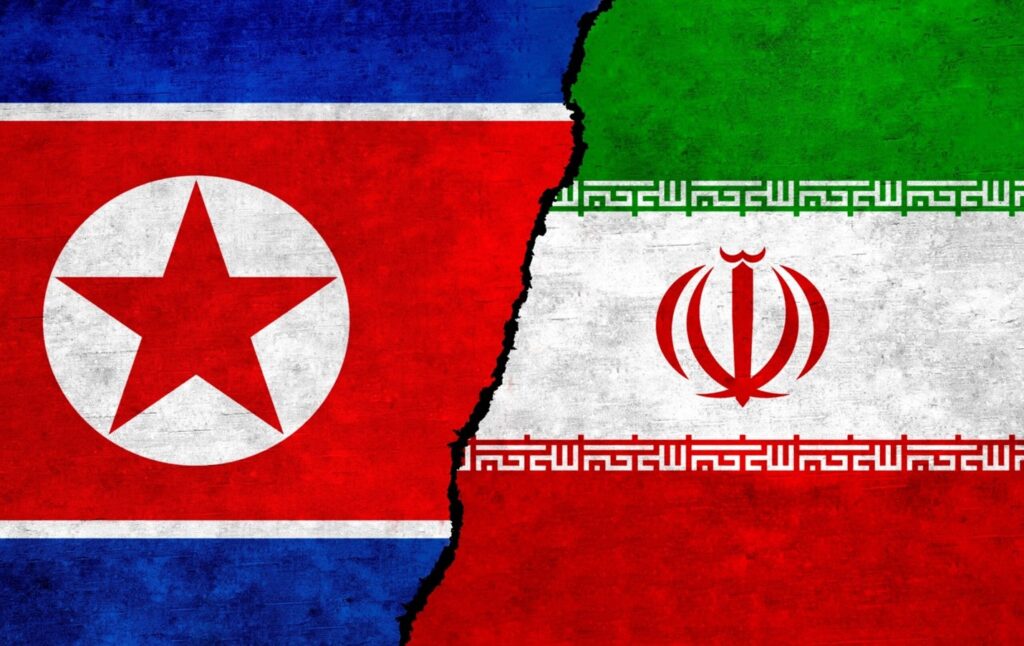
Role of incentives in Denuclearization: A Comparative Analysis of Iran and North Korea by GSI
Abstract:
This research contributes innovatively in ascertaining why identical denuclearization incentives were successfully used in Iran in a temporary context (2015 JCPOA), yet not in North Korea. Making a case that aligning incentives for a regime’s survival strategy defines success, where Iran’s semi-globalized economy rendered it susceptible to sanctions relief, North Korea’s autarkic regime highlighted nuclear weapons as existential safeguards. With Iran’s nearly weapons-grade uranium and North Korea’s hardened fuel missiles, the article posits a “survival first” framework suggesting incentives must reflect a state’s intrinsic-security identity.
Keywords: denuclearization, JCPOA, regime survival, uranium enrichment, missile technology
Introduction:
The search for nuclear weapons continues to stay among the most crucial matters in the global space concerning security. Since the days of the Cold War, international institutions have ensured that there is a myriad of diplomatic instruments to limit the spread of nuclear weapons, one of which is incentive-based denuclearization. These, however, have been met with very different reactions. This comparison centers on two major cases, North Korea and Iran, in order to investigate why otherwise similar diplomatic efforts have yielded different results. The study examines differences in regime type, economic linkages and security issues, influence how responsive states are to incentives from denuclearization.
The analysis shows that Iran’s partially globalized economy and adherence to global norms render it receptive to gradual sanctions-lifting and security assurances, provided these are in accordance with its rights under the NPT. In contrast, North Korea’s highly centralized, isolationist regime views nuclear weapons as a component of regime viability and is consequently less responsive to incentives towards universal disarmament. More effective for North Korea would be a gradual development of coexistence alongside incremental gains in building confidence, in place of seeking short-term gains such as denuclearization. This analysis draws upon academic research, official state and news reports in an effort to create an in-depth look at the strategic imperatives guiding each state’s nuclear placement.
Denuclearization:
It is described, in international relations, as a voluntary action of a state to restrain, reduce or eliminate its nuclear weapons programme.It involves freezing nuclear activities, dismantling facilities, and the acceptance of verification by International organizations like the International Atomic Energy Agency (IAEA). It can be voluntary, under multilateral treaties, or the consequence of diplomatic pressure and negotiations.
Survival Strategy:
One of the key ideas is that nuclear weapons might be a “survival strategy” for an authoritarian regime. That is, the leaders come to regard the bomb as the final insurance against foreign aggression or regime overthrow. In the case of North Korea, U.S. intelligence specifically indicates Pyongyang views its nuclear weapons as “critical to regime survival”.
This is a larger logic, when a state feels it is very threatened, it can hold on to nuclear weapons even at very high economic costs because they deter competitors. “Survival strategy” means a policy of building or maintaining nuclear weapons primarily to preserve the regime and security. Both Iran and North Korea have, at times, appealed to national security or deterrence to justify their programs. Yet their tolerance for giving them up varies enormously, indicating how highly each regime perceives its survival vis-a-vis the payoffs for cooperation.
Iran:
Iran’s nuclear problem has progressed in a series of turns. During the 1950s-70s, when the Shah was ruling Iran, It had U.S. assistance to construct nuclear reactors (e.g. the Tehran Research Reactor, 1967) and became a member of the NPT in 1970. The Shah had grand plans for a large civilian nuclear program. The 1979 Revolution ended these schemes and broke with the West. There was some secret nuclear activity by Iran in the 1980s. By the 1990s, Iran had constructed a fuel-enrichment facility at Natanz, revealed in 2002. Global tensions increased in 2003 when the IAEA called for Iran to suspend enrichment; Iran suspended enrichment briefly that year but resumed by late 2004. The UN Security Council imposed sanctions via resolutions (e.g. Res. 1737 in 2006) to stop Tehran’s uranium enrichment and missile programs.
Iran’s economy was severely strained. By 2011-2012 oil exports were in shambles and inflation was higher than 45% with unemployment at about 12%. These harsh economic pressures led Iran to negotiate seriously under President Hassan Rouhani. After two years of negotiations, Iran and the P5+1 (U.S., UK, France, Russia, China, Germany) agreed on the July 14, 2015 Joint Comprehensive Plan of Action (JCPOA) The JCPOA placed hard caps on Iran’s uranium inventory and enrichment (3.67% enriched uranium caps, centrifuge limits) and included increased IAEA monitoring. In exchange, the majority of sanctions related to nuclear were eased. The agreement included a trust-building model of gradually phased “salami-sliced” incentives: verified cooperation prompted incremental easing, e.g., the unfreezing of $100 billion of Iranian assets and the return of oil export revenues.
After the deal, Iran’s oil production recovered (above 2.5 million barrels/day) and GDP expanded vigorously (approximately +12.3% in 2016) showing how strong the economic incentives were under the JCPOA. But the JCPOA gains were insecure. In May 2018 the US pulled out and re-imposed sanctions on Iran. Tehran progressively left its JCPOA constraints by 2019-2020, enriching uranium to over 20% purity and expanding stockpiles. The economy took a severe hit; IMF figures indicate GDP declining 4.8% in 2018 and set to contract by ~9.5% in 2019 after sanctions intensified, with inflation and currency losses hitting the population. U.S. “maximum pressure” thereby caused discomfort and internal protests inside Iran (e.g. large-scale anti-government protests during late 2019). This state of affairs pushed Iran back to the negotiating table with Washington in 2021.
In May 2025, the United States and Iran resumed indirect nuclear talks with Omani facilitation. The talks centered mainly on Iran’s uranium enrichment program and the revival or amendment of the 2015 Joint Comprehensive Plan of Action (JCPOA). Iran offered to limit its uranium enrichment to a set level but refused to suspend it completely. As a countermeasure, Tehran asked for meaningful economic relief, especially the removal of U.S. sanctions on its banking and petroleum sectors. The negotiations did not yield a signed agreement, but both sides hinted at a desire to continue diplomatic talks. Neither side issued a joint statement, though media briefings by participating officials validated the fact that negotiations were ongoing, with scheduled follow-up meetings.
North Korea:
North Korea’s nuclear path came earlier than Iran’s and has been marked by rounds of negotiations and threats. The 1992-93 NPT crisis resulted in the 1994 U.S.–North Korea Agreed Framework. Under the agreement, Pyongyang committed to suspending its graphite-moderated reactor (plutonium production) in return for two light-water reactors (to be supplied by a consortium) and heavy fuel oil. The U.S. and its allies also committed not to invade North Korea. Implementation was problematic, but essentially no nuclear test took place for more than a decade.
In October 2002, nevertheless, North Korea confessed to a secret uranium-enriching program (breaking the Agreed Framework and its NPT commitments). By the end of the year Pyongyang had removed itself from IAEA inspection and by January 2003 formally withdrew from the NPT This led to the institution of the Six-Party Talks in 2003 (the players being the Koreas, the US, China, Japan, and Russia). In 2005 the Six-Party talks resulted in a joint statement wherein North Korea agreed to “abandon all nuclear weapons” for energy and security assurances.
But relations soon deteriorated. North Korea tested its first nuclear test on October 9, 2006, at about 1–2 kilotons yield. This confirmed Pyongyang’s ownership of a bomb and led to new UN sanctions. Sanctions and successive rounds of diplomacy failed to halt Pyongyang’s push into hypersonic missiles and made more tests, two in 2009 and three further tests in 2013 and 2016 under Kim Jong-un. Finally, the supposed hydrogen bomb test in September 2017. In late 2017 North Korea had operational intermediate and intercontinental-range missiles capable of reaching U.S. soil and announced itself as a nuclear state in full.
Diplomacy in 2018–2019: summits between North and South Korea took place, and U.S. President Trump met Kim Jong-un twice (Singapore June 2018, Hanoi February 2019). The Singapore summit yielded only a loose joint statement, and the Hanoi summit collapsed when Kim proposed dismantling some parts of the Yongbyon complex in return for the removal of significant sanctions. Washington declined, demanding wider disarmament first. In October 2019 the first working-level talks after Hanoi (in Stockholm) concluded with no deal; Pyongyang said it would not resume negotiations unless the U.S. first made “substantial” concessions (i.e. full sanctions removal and such cease of military exercises)
Since then, communication has slowed down considerably, and weapons tests have resumed by North Korea (additional missile tests and purported new nuclear technology tests in 2022–2024).
North Korea has never signed on to verifiable denuclearization throughout. It has, at times, provided incomplete actions (freeze at Yongbyon, disable some of the equipment) in exchange for big security assurances and sanctions relief. For instance, in Hanoi in 2019 Kim proposed to shut down Yongbyon’s primary reactors if the U.S. removed the most stringent UN sanctions. But Washington’s insistence on total, verifiable, irreversible denuclearization (CVID) was not negotiable, and Pyongyang objected.
The DPRK’s habitual practice, calling for mutual actions and walking away when not received indicates it places a higher premium on its nuclear umbrella than the incentives provided. As a U.S. intelligence report observed, despite all the outreach, North Korea remains unlikely to relinquish its weapons arsenal. Maintaining nuclear arms is critical to regime survival. Therefore, North Korea’s bargaining style can be described as maximalist and suspicious, it has little hesitation to walk away if the quid pro quo is not viewed as adequate.
Analysis:
This section discusses the two instances of the effectiveness of incentives (economic, security, diplomatic) and the factors that explain Iran’s partial compliance and North Korea’s defiance. Iran’s engagement was largely driven by economic incentives and the relatively open nature of its economy, whereas North Korea’s radical isolation and bleak survival prospects considerably reduced the autonomous effect of such incentives.
Economic Incentives
-
- The Joint Comprehensive Plan of Action (JCPOA) offered considerable and real economic incentives for Iran. Relief from sanctions allowed access to significant revenues from oil exports, which account for approximately 85% of government income. The effect was striking, Iran’s Gross Domestic Product (GDP) saw a resurrection with an estimated growth of approximately 12.3% in 2016, along with the stabilization of its currency. Thus, the promise of economic relief was a welcome incentive for Tehran to compromise. On the contrary, the re-imposition of U.S. sanctions in 2018 led to a recession of Iran’s economy by 4.8% in 2018, followed by a further loss of 9–10% in 2019, which highlights the importance of such incentives.
-
- Time and again, economic incentives, in the form of payments, energy aid, and sanctions relief, have been proffered to North Korea. The 1994 Agreed Framework promised two light-water reactors and fuel oil, but North Korea deemed them inadequate and was reluctant to take them. More recently, the U.S. “maximum pressure” campaign imposed some of the strongest sanctions ever on North Korea, yet analysis observes that even draconian sanctions were incapable of inducing an acute crisis. North Korea managed to maintain much visible economic activity by illicit trading nimble evasions.
-
- Pyongyang’s exports fell in 2018, but its imports and domestic expenditure on displays of prosperity remained healthy. Short of that, North Korea has been capable of enduring sanctions and makes only demands for “grants” of relief in return for each of its concessions. The abortive 2019 Hanoi summit showed that Kim Jong-un would agree only to dismantle Yongbyon if the strongest sanctions were removed. The U.S. refusal to make economic concessions up front led to a stalemate. This indicates that North Korea’s arithmetic of the bargain is very risk-averse, only sequential and symmetrical inducements would cause it to de-escalate its program.
Security Incentives
-
- Security guarantees to Iran have been implicit, not explicit. The JCPOA had given international legal assurance that Iran could keep its civilian program; Iranian officials often invoked their right to enrich within the Non-Proliferation Treaty (NPT).⁸ But no official U.S. treaty or alliance promise was made to Iran. Its leaders remain suspicious, invoking experience (e.g., the fate of Gaddafi) to reject any security guarantee. US officials have kept secret that preventing war was part of the JCPOA rationale, but none were promised a mutual defense treaty. Iranian negotiators have thus demanded a right to have some minimum “nuclear deterrent” or at least a latent capability.
-
- North Korea’s security guarantees are foremost in Pyongyang’s mind. The 1994 Framework delivered a non-aggression vow, with the U.S. committing to move toward full normalization of political and economic relations and not to strike. Subsequently, in 2005, the Six-Party joint statement incorporated U.S. guarantees of non-aggression. However, North Korea has consistently refused to accept these as adequate, lest it is being misled. Under the 2018–19 diplomacy initiative, U.S. and South Korean leaders provided public guarantees through diplomacy, but once more no binding treaty was signed. North Korea continues to view the presence of American troops in South Korea and occasional exercises as threats. Any vow short of an express security guarantee, therefore, is regarded as empty by the DPRK.
Diplomatic Motivations
-
- Iran’s Relief from sanctions in the JCPOA also had diplomatic dividends relaxed oil and financial flows, return to the international markets, and relaxed UN sanctions. Iran ultimately received some international legitimacy, and the Rouhani government could claim diplomatic victory on the home front. Iran never enjoyed formal normalization by the U.S. (as Egypt did in 1979) or even the complete removal of military-related sanctions. But the potential for greater international interaction (e.g., access to visas, investment) was an incentive driver.
-
- North Korea’s diplomatic inducements have included high-level summits and outreach efforts. The Kim Jong-un and President Moon Jae-in summit in 2018 and the 2018 Singapore summit with President Trump were historic overtures to Kim’s regime. These events seemed to value status more than they offered material incentives. Pyongyang had expected a peace treaty to officially conclude the Korean War and finalize sanctions relief; without these results, the summits offered little long-lasting inducements. In reality, as soon as the negotiations fell apart, North Korea resumed provocation. Clean diplomatic interactions with no material incentives have therefore been insufficient to begin denuclearization efforts by Pyongyang.
Regime Type and Elite Calculus
-
- Both Iran and North Korea are authoritarian, yet with significant differences. Iran’s Islamic Republic is multi-centered in power (Supreme Leader, elected President, political factions). Its economy is partially free-market and linked to the international system. When sanctions threatened mass protest (as between 2018–19), even hard-liners assumed that compromise may be necessary to prevent a regime-threatening crisis. North Korea’s regime, by contrast, is a hereditary dictatorship with complete social control. The Kim dynasty runs a “totalitarian survival state” where opposition is brutally repressed, so public suffering does not readily translate into pressure on leaders. North Korean elites are also deeply indoctrinated in the Songun (“military first”) and Juche ideology, holding out nuclear weapons as central. Survival of the regime has long rested on the manipulation of great powers against one another; nuclear weapons increase its bargaining leverage. Under this cosmology, even brutal penalties falter. Kim is able to assure his people that misery is brought about by imperial foes, burnishing nuclear resolve.
Economic Integration
-
- The Iranian economy is loosely linked to the global one. The country exported oil, traded globally (although with certain restrictions) and was open to foreign investment prior to 2018. That made economic constraints extremely harmful, so easing them was extremely beneficial. Iran immediately returned to the global market as soon as it could, proving how much it relies upon such ties. Despite that, Pyongyang is different; it was primarily autarkic even in good times. The country’s economy relied upon limited mineral shipments and support from China. Despite UN restrictions, China continued limited trade, while Pyongyang relied upon illicit activity (such as counterfeiting, drug smuggling and cyber crime) in order to enrich itself. The regime survived under restrictions for decades, so additional pressure did little to affect its intentions. The absence of regular commercial ties meant there were limited economic benefits (such as terminating trade restrictions) offered to Pyongyang; what primarily interests Pyongyang are security guarantees and maintaining the regime in power.
-
- North Korea sees an existential threat, proximate threats are U.S. troops in South Korea and also U.S.-South Korea military exercises. The DPRK regime is haunted by the fate of Iraq and Libya, so it sees nukes as the ideal deterrent. This creates a dual choice either maintain nukes or risk being overthrown. Iran also sees threats (by America, Israel and local rivals), though they are more distant. Its regime also has a theocracy and big population as other underpinnings of staying in power, so it might be less cornered. Iranian officials continually invoke the deterrence imperative, though they’ve survived more crises (eight-year war against Iraq, sanctions and local campaigns) without nuclear weapons.
-
- In Iran’s case, Surviving does not simply require weapons; economies and international support are significant as well. The varying feelings of vulnerability determine how much each regime requires nuclear weapons. The variables account for the distinctions among them. Iran complied with the JCPOA (and is open to negotiation in 2025) primarily due to tangible economic gains and the frailty of its regime. When the JCPOA really delinked sanctions, Iranian moderates could demonstrate people’s gains. The Iranian group recognized that concessions of some nuclear benefits would yield significant gains; they believed the U.S. would hold up its end, particularly because there was a multilateral enforcement mechanism. Leaders in Iran learned to hedge; they demand rights to enrich in order to secure power, though they haven’t entirely eliminated negotiations.Conversely, North Korea has seldom found incentives adequate. Its tactics are to demand everything first. The DPRK insisted repeatedly that the U.S. withdraw its troops and sanctions first, then grant any nuclear concessions. It rewards itself in the short term by extending sanctions (since the U.S. rejects such terms) and in the long term by slowly refining its arsenal. North Korean negotiators have scant trust in U.S. assurances; in their opinion, eliminating nukes would expose the regime to vulnerability. The Hanoi demonstration illustrates their arithmetic, Kim would close Yongbyon if significant sanctions were removed, but he offered nothing until that commitment was assured. Such extreme demands guaranteed the negotiations failed. Overall, Iran responded to incentives because the incentives were acceptable and the survival arithmetic of the regime permitted negotiation. North Korea did not respond because its demands were greater (unmatched by incentives) and its rulers valued the bomb as its primary security insurance.
Conclusion & Policy Recommendations
The research yields important lessons. First, incentives are conditional on their success. Iran demonstrates economic incentives can secure nuclear concessions if they are paired with verification. North Korea demonstrates that however, without a security guarantee, incentives do not work. Second, survival motivates both regimes whereas Iran cares about international norms and will settle for partial bargains, North Korea’s isolation guarantees its intransigence. Third, regime type and external relations dictate behavior such as Iran’s semi-democracy promotes compliance, whereas North Korea’s hardness breeds defiance. These lessons yield specific policy prescriptions for each case.
-
- The U.S. and its partners need to pursue a phased, controlled deal that accepts Iran’s limited rights to enrichment. Forcing “zero enrichment” is a sign of bad faith and recycling the discredited “Libya model” which only feeds Tehran’s distrust. Negotiations should allow Iran to have a small, peaceful enrichment program under strict IAEA monitoring.
-
- The U.S. and its allies must slowly restore economic incentives. This can employ a “salami slicing” approach as Iran complies with a negotiated limit, and sanctions are relaxed. The P5+1 might release incremental funds or permit some oil exports as benchmarks. Assurances of security are required, and the U.S. must make credible promises that Iran will not be attacked for compliance. The U.S. must commit to maintaining any new agreement. Domestic law or international commitments may deter future administrations from pulling out, as they did in 2018. Diplomatically, negotiations with Iran on matters like aviation, trade, and cultural exchanges can foster confidence. The 2025 talks suggest Iran will negotiate if it perceives mutual gain.
-
- US policy toward North Korea needs to change from complete disarmament to risk-managed engagement. Experts demand “stable coexistence” with nuclear North Korea in the next few years. America needs to first make concessions without requiring complete denuclearization as a pre-condition. For instance, Washington can relax some sanctions, including humanitarian assistance, in exchange for a freeze on some of North Korea’s nuclear facilities.
-
- These actions need to be able to project a strong security stance for a U.S. reaction in case North Korea breaks its commitments. Steps towards building confidence could include top-level diplomatic engagements and declaring a move toward a comprehensive peace agreement. America must take the first step towards de-escalation, demonstrating a willingness to negotiate.
-
- Decreasing tensions in the short term, such as reducing military drills while reiterating defense commitments and guarantees to South Korea, can decrease Pyongyang’s perception of threat. This can result in incremental denuclearization increases, such as closing Yongbyon facilities and halting missile tests in return for sanctions relief and security assurances.
-
- Seoul and Beijing have to cooperate regionally. Outreach by South Korea can prove peace dividends, and Chinese cooperation is needed. Nonproliferation needs to be the highest priority in U.S. policy, resisting new nuclear nations like Japan and South Korea. Stable peace that mitigates South Korean security fears can enhance U.S. extended deterrence credibility ironically. To avoid nuclear proliferation, it is preferable to shift from calls for immediate denuclearization to the creation of a secure and stable framework.
Iran’s restrained reaction and North Korea’s intransigence together demonstrate that denuclearization is as much a political as a technical problem. Economic incentives previously led Tehran to scale back its program and could do so again if genuine. North Korea sees its nuclear weapons as protection and will not give them up without a binding pledge. Policymakers will also need to rethink, offering Iran clear benefits and economic connections, while approaching North Korea with care, gradual steps and agreement to co-exist with close limitations. A knowledge of each regime’s survival tactics is essential for negotiators pursuing genuine denuclearization gains.
References
-
- Arms Control Association. “Chronology of U.S.-North Korean Nuclear and Missile Diplomacy, 1985–2022.” Arms Control Association Factsheet. Washington, DC, 2022.
-
- Byman, Daniel. “Understanding Autarky: North Korea’s Isolationist Economic Strategy.” Brookings Institution, July 12, 2019.
-
- Cha, Victor D., and David C. Kang. Nuclear North Korea: A Debate on Engagement Strategies. New York: Columbia University Press, 2018.
-
- Council on Foreign Relations. “What Is the Iran Nuclear Deal?” Council on Foreign Relations Backgrounder, October 27, 2023.
-
- Davenport, Kelsey. “North Korea Conducts Fifth Nuclear Test.” Arms Control Today 46, no. 8 (2016).
-
- Elleman, Michael. “North Korea’s Solid-Fuel Missile Program.” 38 North, March 14, 2023.
-
- George, Susannah. “Iranian Officials Warn Nuclear Talks in Peril Without Uranium Compromise.” The Washington Post, May 21, 2025.
-
- Hibbs, Mark. “Iran’s Near-Weapons-Grade Uranium and the JCPOA.” Carnegie Endowment for International Peace, February 15, 2023.
-
- National Public Radio. “Born in the U.S.A.: How America Created Iran’s Nuclear Program.” NPR, September 18, 2015.
-
- Panda, Ankit, and Vipin Narang. “The Hanoi Summit Was Doomed From the Start.” Foreign Affairs, March 5, 2019.
-
- Parsi, Trita. Losing an Enemy: Obama, Iran, and the Triumph of Diplomacy. New Haven: Yale University Press, 2017.
-
- Reuters. “Iranian Inflation Accelerates, Posing Headache for New President.” Reuters, July 25, 2013.
-
- Reuters. “North Korea Breaks Off Nuclear Talks with U.S. in Sweden.” Reuters, October 6, 2019.
-
- Sanders-Zakre, Alicia. “Timeline of Nuclear Diplomacy With Iran, 1967–2023.” Arms Control Association, January 2023.
-
- The White House. “The Historic Deal That Will Prevent Iran from Acquiring a Nuclear Weapon.” Office of the Press Secretary, April 2015.
-
- U.S. Energy Information Administration. “Sanctions Reduced Iran’s Oil Exports and Revenues in 2012.” Today in Energy, April 26, 2013.
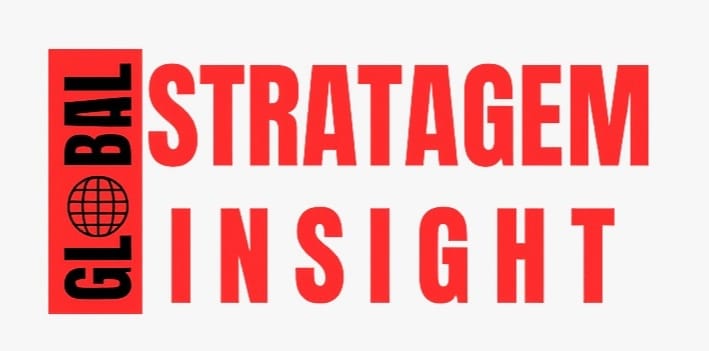
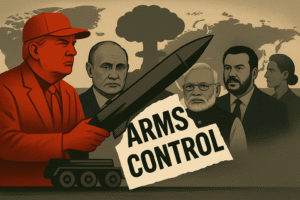
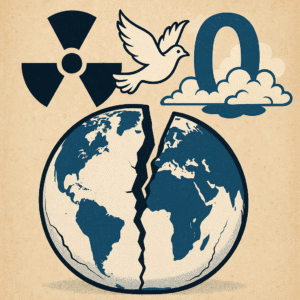
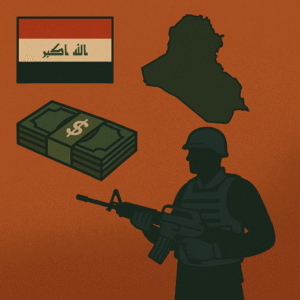
well written!